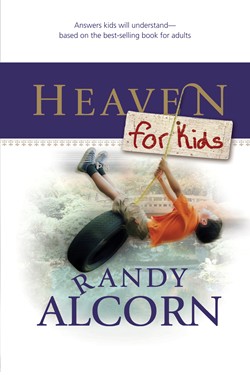Whether you have a child who is dealing with grief for the first time—or whether you’re like me and are still processing childhood grief—the reality of death never goes away, nor does it become easier to accept. But neither can it extinguish our hope.
By Christine McParland
Death and loss are excruciating pills to swallow; imagine how hard it is for children who don’t even know how to swallow pills yet (literally or figuratively). My own introduction to death occurred at barely nine years of age with the passing of my grandmother. Though my grief was no less real than that of my adult family members, I would not fully understand the impact of that loss until two decades—and many funerals—later.
While on a writing retreat at a lakeside apartment one July afternoon, my mind wandered back to that bitter February day when my eight-year-old world ruptured. I stopped short of my word count when past memory and present moment collided, their tsunami-like impact plunging me under a fresh wave of grief. As an adult looking back on my first experience with death, I realized I had lost not only a loved one but my childhood innocence as well. Before my ninth birthday I had to swallow the fact that the world was not the safe and happy place I had always known it to be. Instead, it was a new and frightening reality in which my loved one would no longer exist, but death would.
Granted, this realization isn’t necessarily a bad thing; at some point we each need to confront the reality of our broken and sinful world, and too many children experience this much younger (and more often) than I did. But it is a significant loss nonetheless, and one that is often overlooked when a child deals with grief.
Recent experiences with death have been especially traumatic in the wake of the coronavirus pandemic. Due to quarantine restrictions, children who lost loved ones were likely not able to say goodbye nor receive the comforting presence of extended family and friends. Such losses force children into a world in which terrifying and heartbreaking things like death and pandemics are not only possible but unavoidable.
Though we are helpless to prevent disease or death, how can we point little ones to the hope of Christ’s resurrection? Here are three ways to help children process their grief and find hope in the promise of eternal life.

1. Remind children that God is with them in their grief.
The story of Lazarus from the Gospel of John is a powerful account of both God’s presence with us in our grief as well as his power to grant resurrection life. When his friend Lazarus died, Jesus was grief-stricken for his heartbroken friends. He wept too, even though he knew he was about to raise Lazarus from the dead (see John 11:35). Jesus hated death so much that he became a human being just like us so he could feel our pain—from a skinned knee to a broken heart—and so he could die and rise again to free us from the power of sin and death.
2. Talk about our hope of Heaven and spending eternity with God, but don’t limit this hope to something we can look forward to only after death.
For children, the thought of having to grow up—let alone grow old— before enjoying eternal life can seem immaterial at least and despairing at worst. Remind them of Jesus’s words: “I have come that they might have life, and have it to the full,” and “…this is eternal life: that they know you, the only true God, and Jesus Christ, whom you have sent” (John 10:10, 17:3, NIV). While our entrance into Heaven is through the doorway of death, eternal life can be ours now in relationship with God through Christ.
3. Let children know that it’s ok to feel sad, and don’t pressure them to feel hopeful when the sense of loss is still acute.
Even equipped with the truth of God’s Word, realities like death and heaven can be difficult for children to understand or accept. So, do what Jesus did in his parables—illustrate a spiritual concept through natural imagery. Projects like planting seeds, growing bean sprouts, or raising butterflies at home are hands-on experiences that can open your child’s imagination to the beauty and hope of resurrection life (especially when paired with Scripture passages like 1 Corinthians 15:35-44).

Whether you have a child who is dealing with grief for the first time—or whether you’re like me and are still processing childhood grief—the reality of death never goes away, nor does it become easier to accept. But neither can it extinguish our hope. In between the pain of past loss and the promise of future resurrection, we can grieve even as we grow in the abundant and eternal life Jesus died and rose to give us. As Peter declared to the Pentecost worshipers in the second chapter of Acts, the hope and promise of the gospel “is for you and your children” (2:39, NIV, emphasis added).
For resources on grief for adults, check out Ways to Help Someone Who is Grieving and How to Come Alongside Someone Going through Pain, as well as Tyndale’s Resources for Navigating Grief.
 Heaven for Kids by Randy Alcorn and Linda Washington
Heaven for Kids by Randy Alcorn and Linda Washington
In a language kids can understand, Randy Alcorn explores Biblical answers to the questions kids often have about heaven. As in the adult title, Heaven, he addresses the difference between the present Heaven, where we go when we die, and the New Earth, where we will live forever with Jesus after he returns. Intended for kids age 8-12, Heaven for Kids is sure to be an excellent resource for families, especially those in which the parents have read the adult title and wish to pass on that same level of understanding to their children. The book features ten chapters of questions, and answers based on scripture and written in a style relevant to today’s kids. The book also has a summary of the Gospel for those who want to be sure they are going to Heaven someday. Randy encourages kids to live “in Light of Heaven.”




